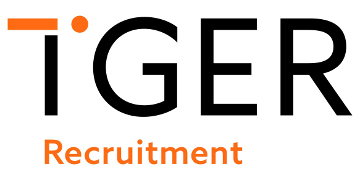Diversity is a term that has become ubiquitous in the business lexicon in recent years - so much so there is sometimes the temptation to dismiss it as little more than a checklist item, a piece of corporate window-dressing. However, this would be a mistake, according to executives at some of the world's biggest companies.
Demographics in 21st century business have been flipped. Women and minority groups are now recognised as a critical part of the workforce mix. Personal empowerment and a greater acceptance of difference have meant a rise in recognition for LGBT employees. In addition, today's workforce is made up of four different generations - traditionalists, boomers, Gen Xers and millennials - all with their own ways of working, living and looking at the world.
Keeping such a varied workforce actively engaged is key to ensuring high levels of productivity, innovation and service. And as a result, companies are holistically involving their HR departments to secure a future that has diversity embedded into the culture.
Kellie Chapman, Microsoft's director of diversity recruiting, describes the process of nurturing diversity as being centred around three key pillars.
"The first pillar is representation, and that is about increasing the diversity pipeline," she explains. "Next is inclusion, which is all about supporting the cultivation of an inclusive workforce, ensuring everyone's ideas are valued and included. And the last piece is market innovation - understanding that the marketplace is changing and we have to be prepared as a company to sell to and represent the global communities that we serve.
"By focusing on innovation and having diversity," she continues, "We are able to build diverse products that meet the needs of very diverse customers and that in turn helps us grow our business. Ultimately, it is going to spur creativity."
Indeed, the business proposition for diversity and inclusion is that it really impacts on the bottom line. If a company's talent base is reflective of the marketplace itself, it can better understand and sell products and services to a more diverse customer base - which explains why so many firms are placing diversity at the heart of their people management efforts.
"Diversity is at the centre of everything we do," says Ceree Eberly, chief people officer at Coca-Cola. "And we have a very simple definition of it: to be as inclusive as our brand. If you look at that, the definition goes across gender, race, everything. And by focusing on diversity as a business advantage, I think we are benefiting everyone."
As global leaders such as Microsoft, Coca-Cola and PricewaterhouseCoopers have discovered, a successful diversity programme is about learning how to work across differences, in order to unlock true business value. "Diversity, ultimately, is about how we build an organisation with talented individuals from very different backgrounds," confirms PwC's chief diversity officer, Niloufar Molavi. "I don't think diversity is ever going to become passé - unless we believe managing talent is no longer relevant."
Creating, nurturing and managing a diverse workforce is just one of the topics due to be discussed at the upcoming HR Summit US 2011 being held from 12-14 September at the Barton Creek Resort & Spa in Austin, Texas. This closed-door summit, hosted by GDS International, will feature some of the leading voices in the people management sector, including Geri Thomas (pictured), chief diversity officer at Bank of America; Moheet Nagrath, global HR officer for Procter & Gamble; Jim Rottman, VP of global HR at American Express; and Kathleen Wilson, chief HRO at Walgreens.
Topics under discussion will include the risks and rewards of the mobile workforce, best practice in succession planning, how integrated learning can improve organisational development and innovation, and the issues and solutions around employee mobility and relocation.
HR Summit US 2011 is a C-level event reserved for 100 participants that includes expert workshops, facilitated roundtables, peer-to-peer networks and coordinated meetings.
HR magazine is a media partner of HR Summit US 2011.
For more information, visit http://www.hrsummitus.com










